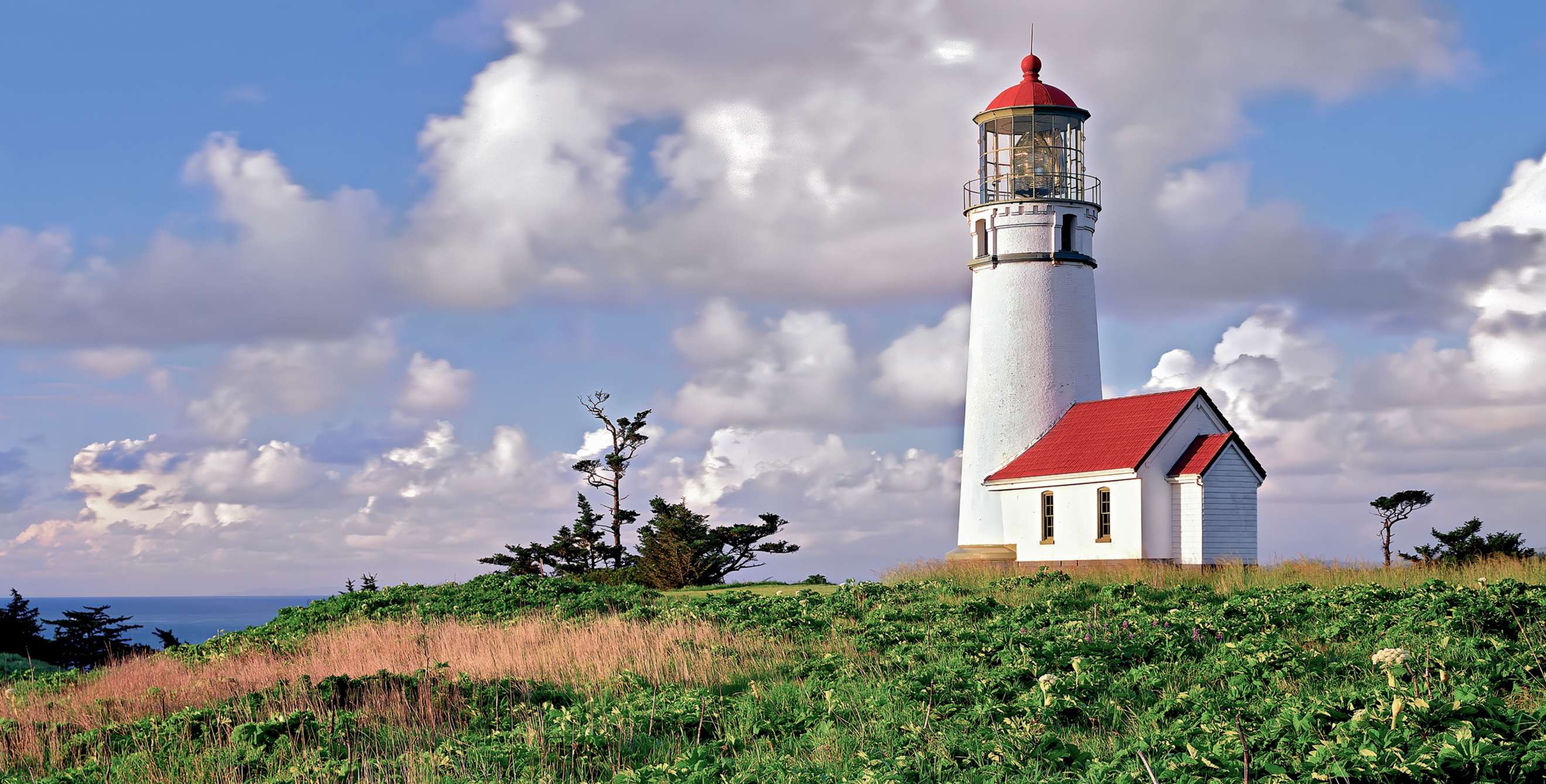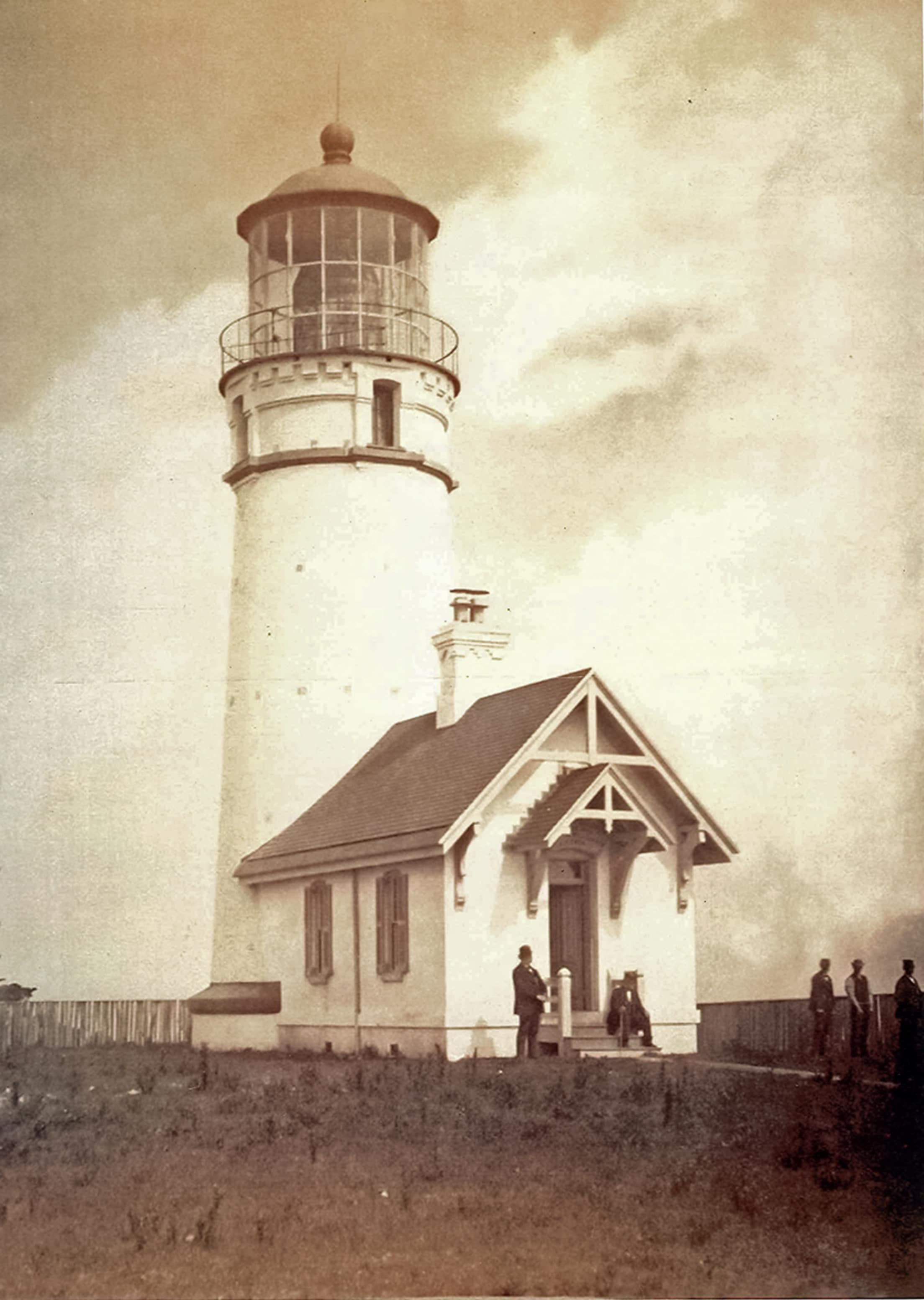
Celebrating Cape Blanco Lighthouse
One hundred fifty years ago, Oregon's loneliest lighthouse was born, bringing hope to mariners.

By the time Cape Blanco Lighthouse opened in 1870, it was long overdue. The stretch of sea between the cape and Port Orford, Oregon, a newly goldrich hamlet nine miles south, was brutal. Violent squalls would rage into the town's port, while at the cape, torrential rain and thick fog could blind captains to rocks and reefs. Shipwrecks happened so frequently that a local innkeeper started hanging a lantern in a window to aid mariners.
Surveyors decided the area needed a lighthouse, but construction was delayed: first by the wettest winter on record, then again when a supply ship lost most of its cargo in a gale. Eventually more materials arrived, and the crew laid the bricks, installed the doors and windows, and hoisted the intricate, 2,000-pound Fresnel lens—fresh from Paris—into the lens room, 50 feet above land. Finally, on Dec. 20, 1870, the lighthouse flickered to life.
The beacon has shone each night since, thanks to generations of keepers, sometimes serving simultaneously. Two of them—James Langlois and James Hughes—devoted their entire careers to Cape Blanco (42 years and 37 years, respectively). In 1903, Mabel Bretherton was appointed to the job, becoming Oregon's first female lighthouse keeper. These hardy people faced a Sisyphean task: keeping the lamp lit every night from sunset to sunrise, by trimming the wick, replenishing the oil, and winding the clockwork.
The lighthouse was extremely isolated. Early on, ships bearing sugar, flour, coffee, and lard came twice a year. The keepers lived off the land, tending vegetables, raising livestock, and hunting deer and elk. Even after an access road was completed in 1886, it often washed out during winter storms. As the rain pounded, the wind could roar up to 100 miles per hour, tearing shingles off the keepers' residence and shattering the lighthouse windows.

Sometimes, even with the light, ships still foundered. One stormy, foggy night in 1903, the South Portland ran straight into Blanco Reef. The captain abandoned ship in the first lifeboat—with the ship's engine still running—and the South Portland continued another 45 minutes before it sank. Eighteen people perished. In these tragic circumstances, the task of searching for survivors fell to the keepers.
In 1936 the lighthouse was electrified, reducing the need for staff. Over the ensuing years, it become a navy post, a Coast Guard station, and eventually a state park. Cape Blanco's light still shines nightly to aid mariners, and the lighthouse regularly hosts visitors.
Volunteer-guided tours begin in the workroom, where an 800-gallon barrel evokes containers that stored lard for the lamp, and an apron recalls the garments keepers wore to ensure their brass buttons didn't scratch the lens. Upstairs, on the watch level, peepholes grant a peek at the Pacific. One last ladder leads to the lens room. Standing there, you've got a bird's-eye view of the verdant coast and the wide blue ocean.
The lighthouse is closed through summer and possibly the remainder of 2020, but you can catch views of it from Paradise Point State Recreation Site and Port Orford Heads State Park, both of which are open for day use only.